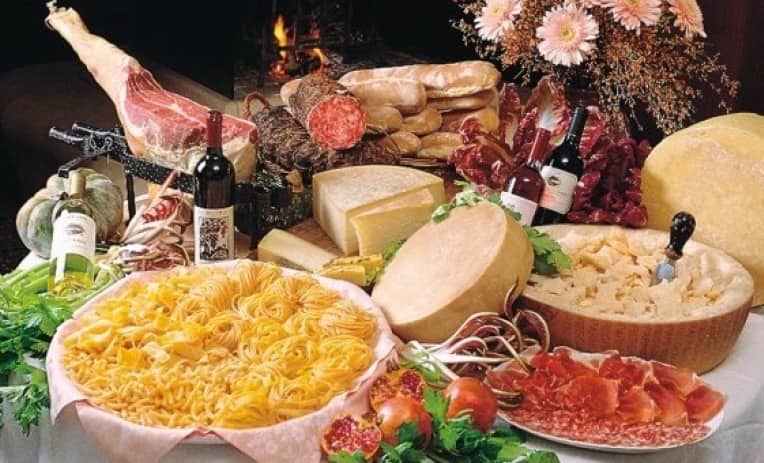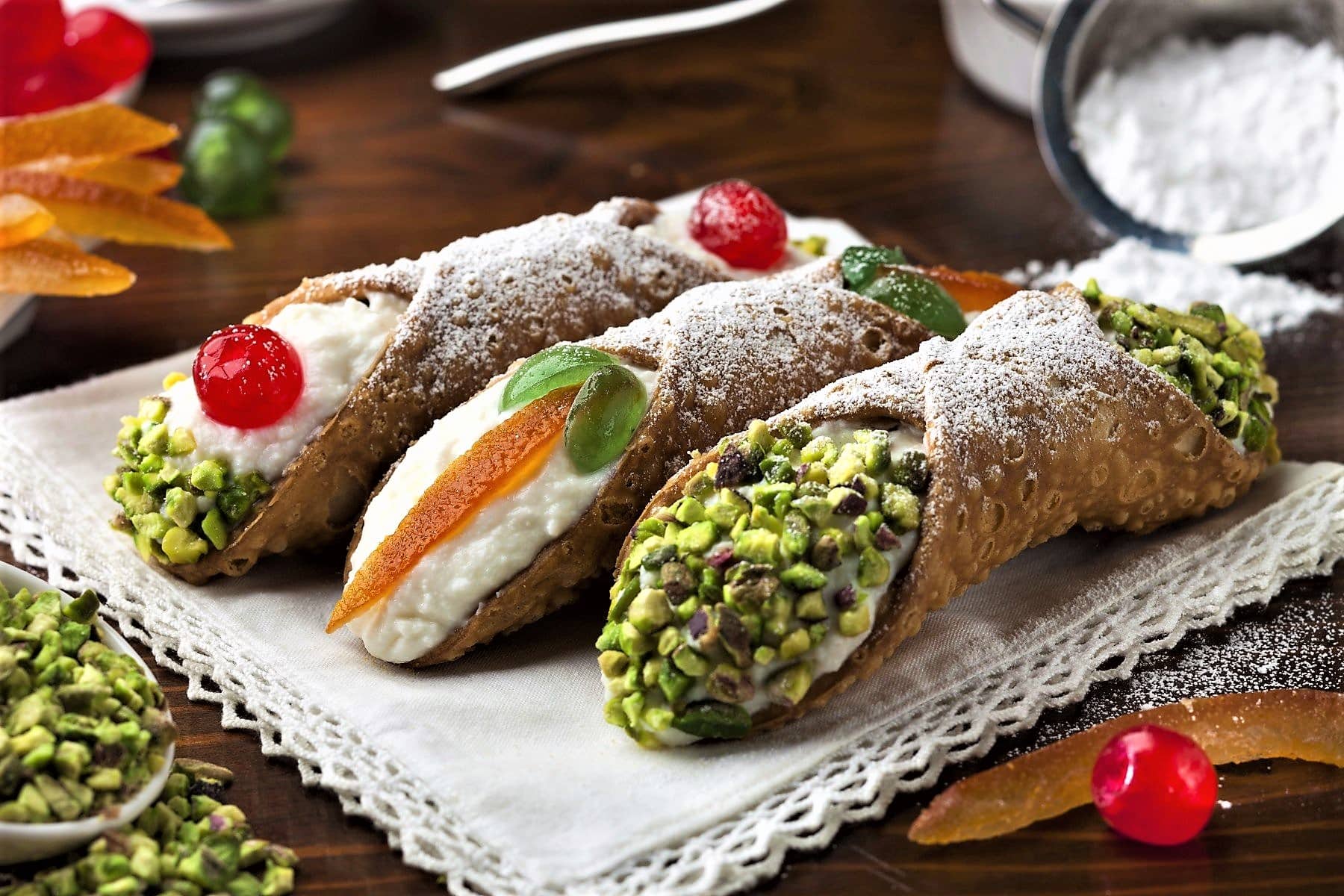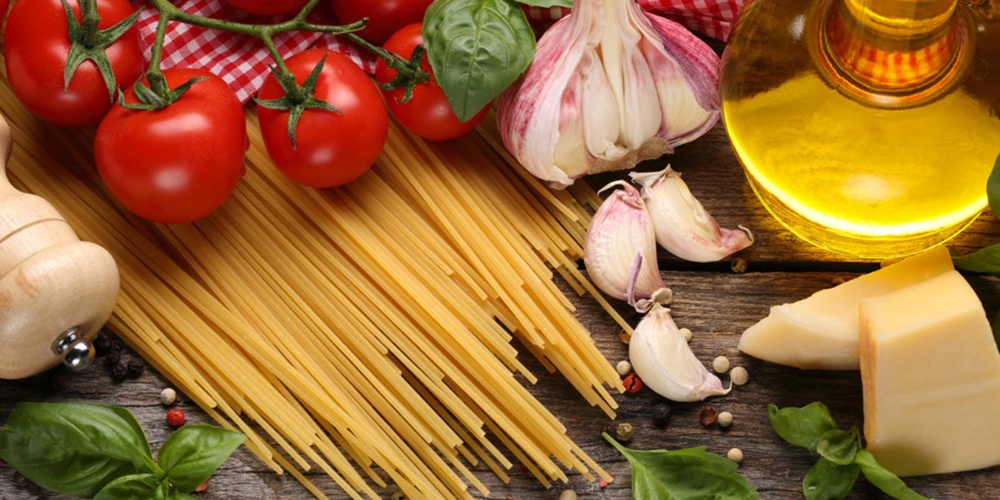Cibo significa ricordi e bei momenti passati insieme: non c'è italiano che non pensi con affetto alla torta della nonna o alla zuppa di pesce del papà, alle lunghe tavolate della Vigilia di Natale o alle merende a base di pane e cioccolato, per questo non importa quanti sushi restaurant ci siano a Milano, quante taverne greche si possano trovare a Roma, chiunque sarà sempre orgoglioso della cucina della propria città, fatta da un ineguagliabile mix di creatività e qualità, quasi sempre a Km 0.
Cibo italiano: i capisaldi della tradizione

Quando si parla di pizza, della pasta o del risotto, del gelato e naturalmente del caffè l'Italia è un po' più unita. Tuttavia se si volessero elencare tutti i possibili tipi di pasta, o tutti i gusti di gelato esistenti, ci vorrebbe un'enciclopedia.
Un viaggiatore che percorre il paese da Nord a Sud può divertirsi a scoprire come il cibo cambia anche nel giro di poche decine di chilometri. Consideriamo la pizza, per esempio, un alimento apparentemente semplice: quella di Roma è alta e porosa, decisamente diversa da quella di Napoli, dove l'impasto è lavorato ad arte per essere sottile ed elastico.
La pasta, poi, senz'altro amatissima in tutta l'Italia, ha un posto speciale nel cuore della gente del sud, mentre al nord è molto apprezzato il riso, è celebre infatti il risotto milanese. Nel centro Italia invece sono diffuse le zuppe fatte con degli ottimi legumi di produzione locale.
A Parma e dintorni dopo una visita al Duomo o una serata al Teatro Regio, i viaggiatori possono deliziarsi con il celebre formaggio parmigiano reggiano oppure con un dolcissimo prosciutto crudo. In Campania il formaggio per eccellenza è invece quello a pasta filante, la mozzarella di bufala, che si accompagna particolarmente bene con i pomodori locali, grandi, rossi e tondi, perfetti se conditi con l'olio prodotto dagli olivi secolari del sud.
Essendo l'Italia una penisola con circa 7500 km di costa, il pesce ha naturalmente un posto d'onore. Anche in questo caso, da una regione all'altra, ricette e tradizioni cambiano drasticamente. La costa toscana è famosa per il caciucco, un'ottima zuppa di pesce e crostacei, a Napoli la frittura di calamari e gamberi è un must da non perdere assolutamente. Il tonno rosso, con la sua carne pregiata, soda e compatta, è invece uno dei punti più alti della ricchissima tradizione siciliana.
Anche la Sardegna ha una enorme varietà, sono famosi i suoi rossi corposi, perfetti per accompagnarsi al sapore deciso dei formaggi a base di latte di capra tipici dell'isola.
L'Italia e i dolci

Dovunque vi troviate in Italia, commettere peccati di gola sarà sempre facilissimo. Il gelato domina ovunque, ma in Sicilia si contende il primato con la granita. Il nord-ovest ha una ricca produzione di nocciole con cui si preparano dei cioccolatini squisiti. A est la pasticceria austriaca e la tradizione italiana hanno dato vita a un interessante e originale mix, mentre in Toscana si trova il panforte, un dolce la cui ricetta ha quasi mille anni. Tipici della zona sono anche i cantucci, biscotti secchi a base di mandorle che legano molto bene con il vinsanto, un vino chiaro e dolce, leggermente liquoroso.
A Napoli babà, pastiera e sfogliatelle meritano tutti almeno un assaggio, mentre lungo le soleggiate coste della Calabria gli ingredienti prediletti dai pasticcieri sono fichi secchi, noci, cannella, arance e mandorle. Se vi trovate da quelle parti non perdetevi il tartufo di Pizzo, un gelato di nocciola con un cuore di cioccolato fuso, oppure i mostaccioli di Soriano, biscotti a base di mosto di vino e miele.
Un tour culinario in Italia rischia di essere praticamente infinito, in ogni caso ogni buon pranzo all'italiana si chiude sempre con una tazza di caffè caldo. Naturalmente espresso!
L'autore
Scritto il 12/06/2019



Paola Cirino
Italia e cibo sono da sempre un binomio indissolubile, sia agli occhi dei turisti che per gli stessi Italiani. Il cibo è infatti è una parte fondamentale della cultura di tutto il paese;